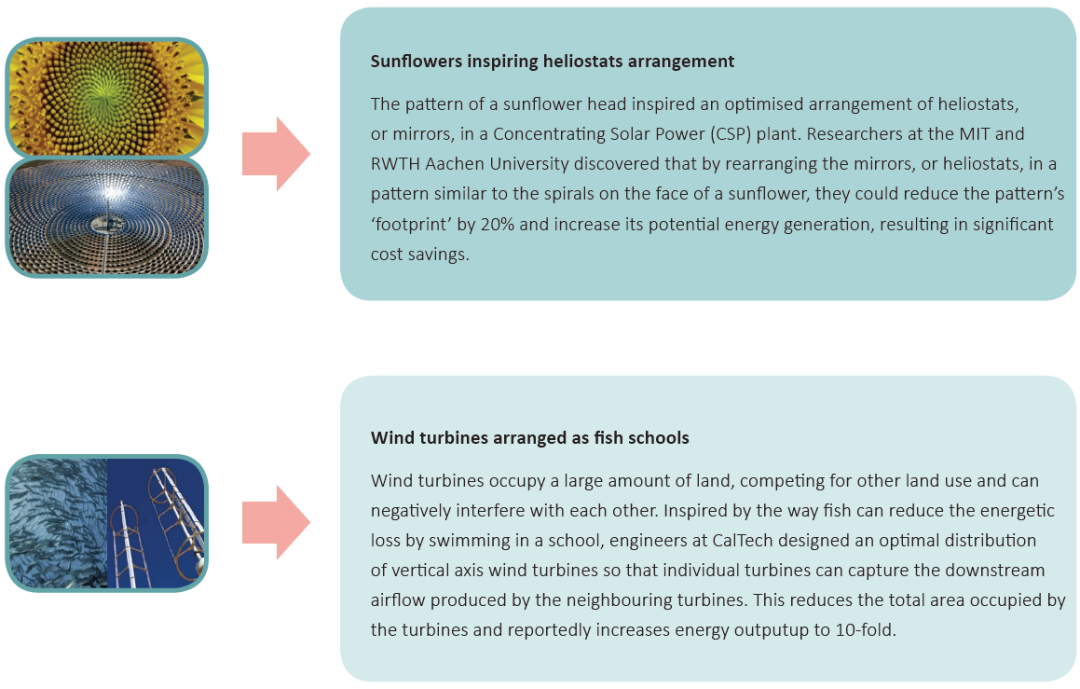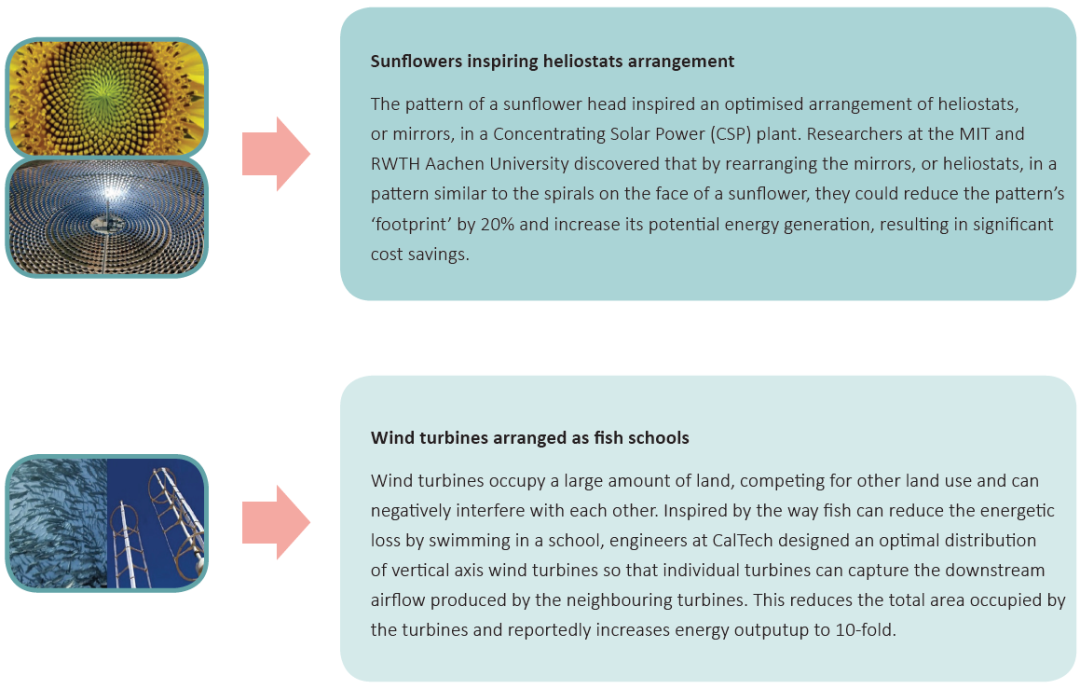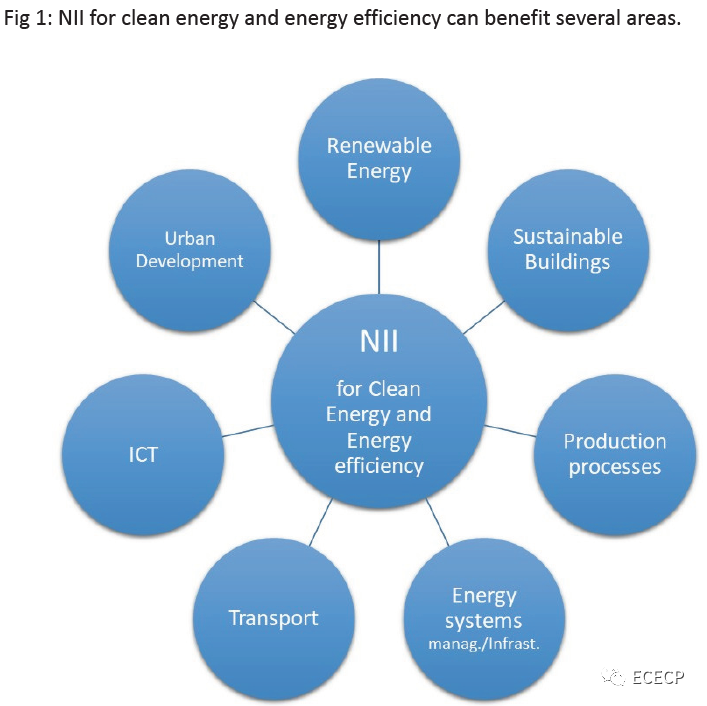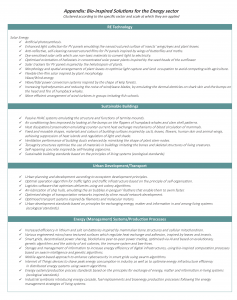Nature Inspired Innovation (NII) for Sustainable Development
Energy related challenges are many: access, security, efficiency and clean energy. They are also interconnected, to people and to ecosystems. You cannot address one challenge without considering other energy sectors or having an impact on other global challenges such as public health, water scarcity, land degradation, biodiversity, social inclusion, climate change, etc. This is the overall challenge to sustainable development: it is a dynamic concept that has evolved over many years and society is not yet equipped to navigate its complexity with confidence.
Lessons from Nature have the potential to help plot a path towards sustainability. Firstly, natural ecosystems are the only convincing example of sustainability on Earth. Secondly, ecosystems, which incorporate myriad species of organisms, have already solved complex problems similar to those we face today.
As a society, we intuitively and progressively align with the principles of ecosystems.The challenge now is consciously to adopt this process so as to speed it up and make it more effective. That is the goal of biomimicry and nature-based solutions. Both of these disciplines promise to provide viable and sustainable solutions to the complex challenges facing our planet.
While nature-based solutions use Nature to achieve defined goals (e.g. using trees to capture CO2 or reduce land erosion), biomimicry aims to emulate Nature to inspire more sustainable innovation (e.g. developing artificial photosynthesis). These approaches can be described as Nature Inspired Innovation (NII).
NII research has seen an exponential increase worldwide over the last 15 years. However, mature bio-inspired solutions on the market are still few and far between. Within the next five years, marketable NII solutions are likely to appear in sectors such as biomedics, the car industry, aviation, building and architectural materials, electronics, energy, optics and textiles.
However, there remains a need for academia, industry and the public sector to make a coordinated effort to capitalise on the still largely untapped potential of NII, aiming to increase awareness and of biologically-inspired design methods at all levels of the education system as well as in civil society:
-
To enhance the communication of bio-inspired solutionsfrom academia to industry, and from bio-inspired innovative start-ups to traditional industries.
-
To stimulate public and private investment into bio-inspired applied research that carries a strong potential for sustainability.
-
To stimulate industry to invest in developing radical innovation (which Nature can inspire) as well as incremental innovation.
-
To promote open Innovation schemes for bio-inspired research so as to share costs and results between industrial partners.
In the EU, NII is gaining pace. Several EU universities already run courses dedicated to biologically-inspired design methods, enhancing the skills of future industry professionals and entrepreneurs.
Research into bio-inspired concepts is now moving from the academic sphere to the private sector through spin-offs, start-ups and technology transfer to large industry (especially in sectors such as automation, medical devices, materials and information management). Specialists in bio-inspired ideation methodologies already assist companies to innovate their products, production processes and internal organisation.


In fact, the EU’s market share of the biomimetics market is second only to North America. The European Commission considers NII fundamental to sustainable innovation. Funds for bio-inspired research and applications are already available under the EU Horizon 2020 Programme and more will be released under the European Green Deal. In the EU member states, recovery plans in the aftermath of the Covid-19 pandemic are focusing on ecological transition where, again, Nature-inspired solutions feature strongly.
NII for Sustainable Energy
By adapting natural models to address the energy related challenges that face the global community, we open up a world of opportunity. NII can help in the drive towards affordable and clean energy, reducing society’s energy intensity and leading it towards carbon neutrality.
Living systems show us new and more sustainable strategies and mechanisms to access and store renewable energy, to convert it, and to distribute it safely avoiding heat wastage. They offer models for more energy efficient hydro/aerodynamic devices, buildings, cities and industries; for decentralised, adaptable and smart energy systems that use locally available sources of renewable energy. Strategies and policies to facilitate the integrated and sustainable introduction of these practical solutions can be developed at different territorial scales with the ultimate goal of transitioning toward circular economies (Fig 1).

NII for Green Growth in China
China is wrestling with complex challenges. It is seeking not only to lower the energy intensity of its economy and increase the share of clean energy in its fuel mix, but also to tackle extensive land degradation, unsustainable urban sprawl, and air and water pollution.
NII could make a valuable contribution in China’s journey towards green growth and the ‘ecological civilisation’ it is aiming towards.The ground is already fertile: China is already on the way towards implementation of concepts such as circular economy, industrial symbiosis and agroecology, which, translated into natural principles, represent the basis of ecosystems functioning.
China is home to a great deal of NII research projects. Thanks to the country’s advanced production processes and materials, research and development of new bio-inspired ideas is set to accelerate. Moreover, China’s capacity for large-scale pilot projects could allow testing and validation of NI technology for a broader replication worldwide.
By embracing a Nature-inspired approach Chinese companies will be able to achieve product innovation. Likewise, Chinese institutions could set up an integrated framework for promoting, developing and coordinating NII activity, not only in the energy sector, but across sectors. Such an approach would see rapid advances in multi-disciplinary research and Nature-inspired approaches in pursuit of a green growth that is more attuned to the natural ecosystems to which we all belong upon which we depend.
By Alessandro Bianciardi
Co-founder of Planet S.A.S., biomimicry expert
*Founded in 2013 by Alessandro Villa and Alessandro Bianciardi, Planet s.a.s is a start-up based in Italy dedicated to bio-inspired innovation.
